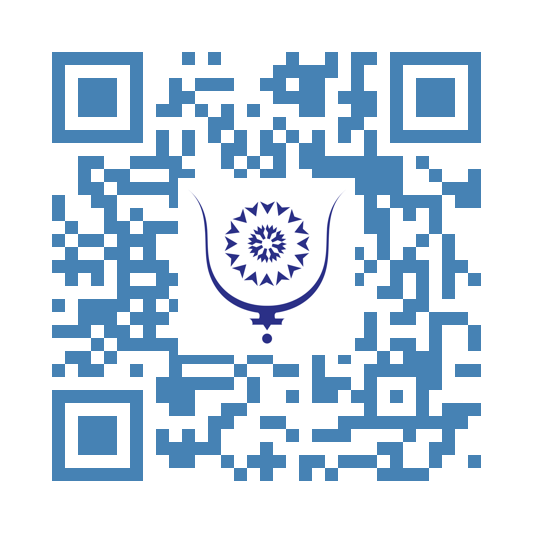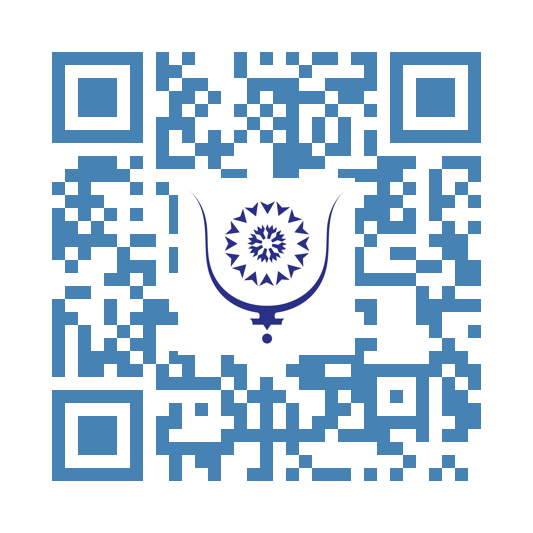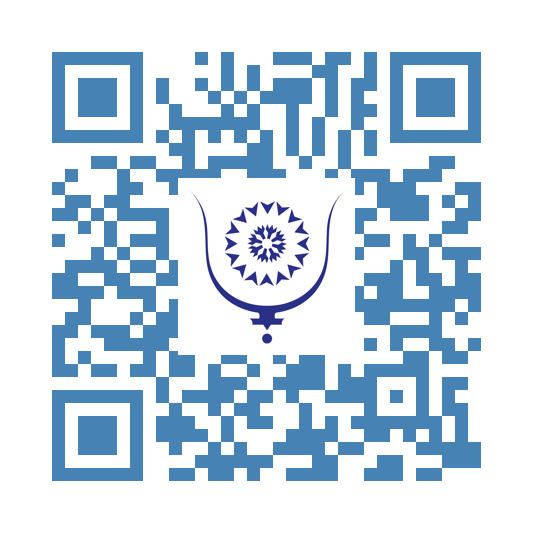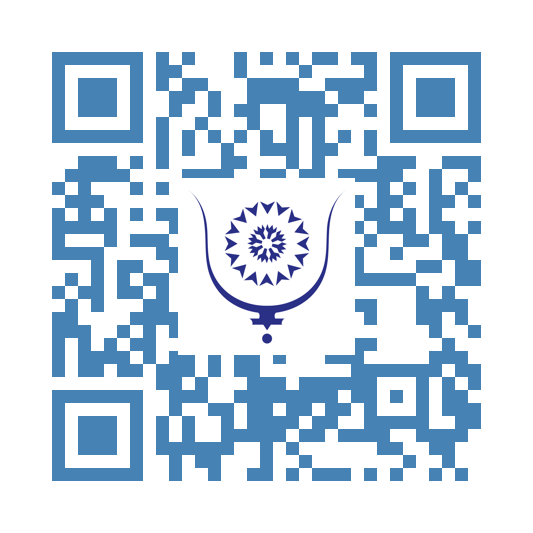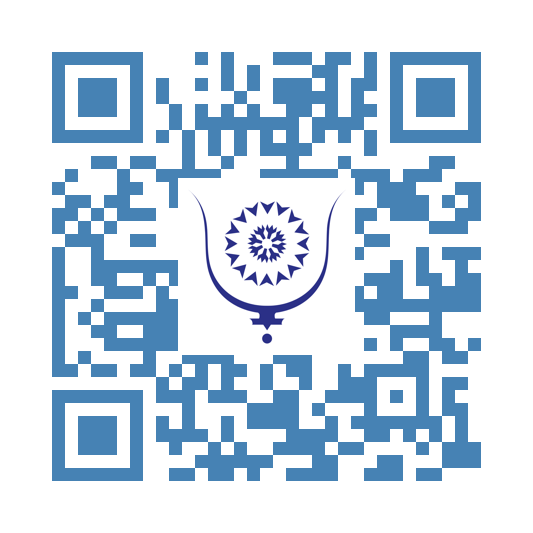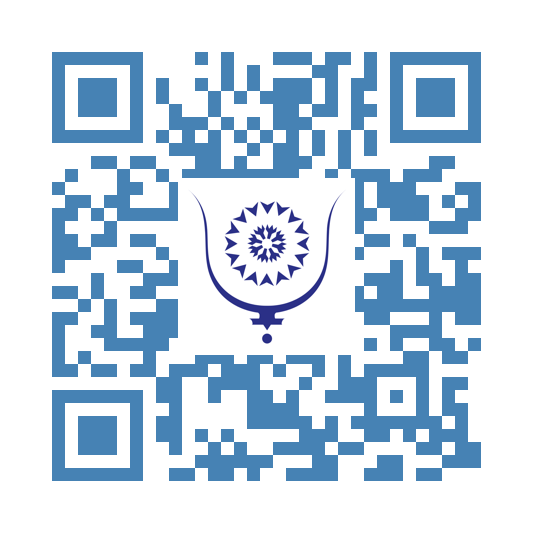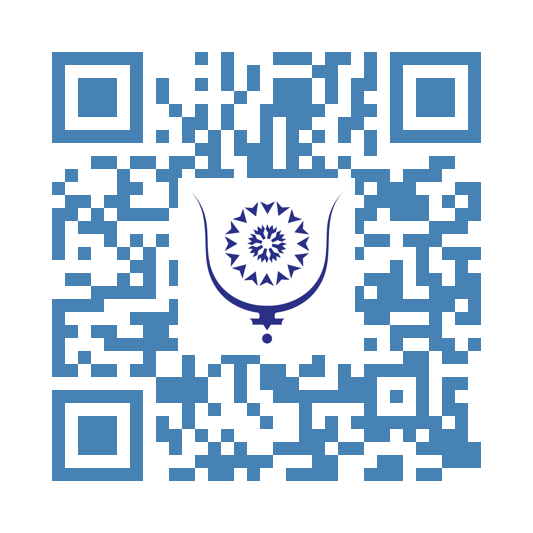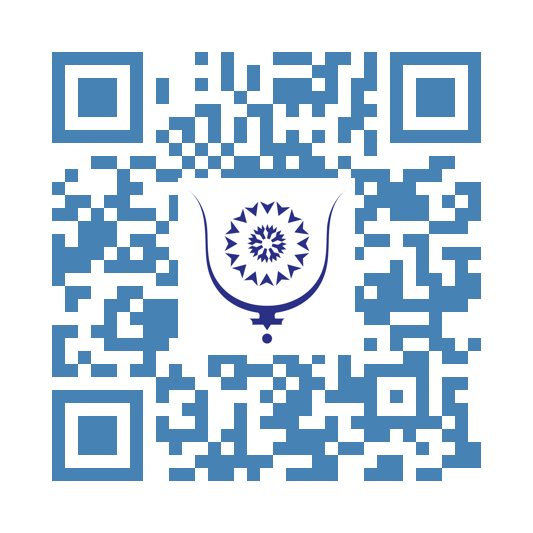A Last Chance: The King of Morocco’s Message to Algeria on the Sahara Issue...
98
His Majesty the King's speech, delivered on July 28, 2025, on the occasion of the Throne Day, carries particular significance in a diplomatic context that is admittedly new but has been developing for a long time. The recent circumstances are marked by the tour of Massad Boulos, father of one of Donald Trump’s sons-in-law and special envoy of the President to the region. These circumstances are further highlighted by the remarks before the U.S. Congress of the newly appointed ambassador to Rabat, who is very close to the President. Richard Duke Buchan III did not mince words: the Sahara is Moroccan. He knows the region well, having been ambassador to Spain.
This situation says a lot about the current dynamics of the conflict over the Moroccan Sahara and about Algeria’s troubled stance on this issue.
In his widely followed speech, eagerly awaited and well-reported by Moroccans due to the rarity of His Majesty's words, the King of Morocco emphasizes the repeated "outstretched hand" offered by Rabat. He stresses the brotherhood between the Moroccan and Algerian peoples while underlining the constancy of his position. The goal is to exert moral and diplomatic weight, presenting an image of responsibility and openness while implicitly denouncing Algerian obstruction. This rhetoric effectively offers a way out for Algeria, which is becoming isolated on the international stage. Addressing the Algerian people, His Majesty essentially calls them to witness.
By explicitly highlighting growing support for his proposal, notably recent backing by the United Kingdom and Portugal, His Majesty sends a message with a dual meaning:
*- Morocco enjoys increasing support for its autonomy proposal, which legitimizes its position broadly supported by the West, the Arab world, the majority of African countries, and others;
- At the same time, Algeria is becoming increasingly diplomatically isolated, as confirmed by the awkward silence regarding the Sahara issue in official statements, especially after the American special envoy’s visit.*
The speech disregards the new realities and moves directly to a constructive proposal for dialogue within a fraternal framework.
On the other side, the absence of any mention of Western Sahara in Algerian official statements following Boulos’s meeting with President Tebboune is particularly telling. Added to this is the recent statement by the Lebanese president, made in the presence of Tebboune and his close entourage in the heart of Algerian power. He thanked the Kingdoms of Saudi Arabia and Morocco for their involvement in resolving the political crisis in his country, without a word about the Sahara. The tone of Joseph Aoun’s voice is grating to the aligned guards. Faces are tense.
This reflects either a political unwillingness or inability of Algeria to publicly address this subject under international pressure, except in the presence of marginal countries. There is also an embarrassment or divergence between the regional political reality and Algerian diplomatic communication. The fact that the American special envoy continues his tour, with a clear mission, according to Trump, "to end this artificial conflict," demonstrates international determination to promote a resolution favoring Morocco’s proposal. At least, this can be inferred from Trump’s letter to His Majesty on the occasion of the Throne Day.
Are we nearing a scenario similar to the resolution of the conflict between Rwanda and the DRC?
His Majesty the King’s renewed call can be seen as a last resort, a final offer of appeasement: an opportunity for Algeria to step down from its stubborn stance without losing face, relying on a credible and internationally accepted proposal. Morocco has shown both patience and firmness. The next step now depends on Algeria’s choice.
Unfortunately, instead of an official response, the Algerian authorities have communicated indirectly through media channels, some of whose outrageous remarks are perplexing. They even claim that the King of Morocco eventually threw in the towel in the face of Algeria’s intransigence. The lifeline extended by the King to a languishing regime is perceived as a mere sponge by the very one who needs it.
A pity.
Algeria now faces its contradictions, confronted with a complex constraint. Continuing to support the Polisario means further entrenchment and a risky isolation, both regionally and internationally, with an even greater threat of political weakening internally. The country suffers from an unprecedented economic crisis, limiting, due to a lack of foreign currency, imports that are vital to the economy and the people. Recurring electricity and especially water cuts in several regions add to the difficulties. The dilapidated state of cities is perplexing. Tebboune’s reassuring talks do not lessen the bitterness of the population.
Heeding Morocco’s call would allow Algeria to reposition itself politically without losing face; explicitly refusing dialogue is increasingly costly and diplomatically unsustainable. Algeria risks sinking into a crisis that benefits neither its international credibility nor regional stability, and even less its domestic stability.
The involvement of the American special envoy in the region, the discretion regarding the Sahara case in Algerian communiqués, and the King of Morocco’s speech all point to the same reality: the status quo can no longer continue.
The generous and wise royal appeal is indeed a last chance offered to Algeria to escape the deadlock, avoid international political embarrassment, and preserve some dignity for its leaders.
By opting for dialogue, Algiers would also save face internally, with a population that has been fed a hatred of the Kingdom for five decades and sacrificed for a cause that brought only misery and disappointment.
What does the population feel when it sees mercenaries occupying part of its territory, parading at its expense, pretending to lead a bogus “republic”?
The international context, with major actors clearly engaged for a pragmatic resolution, reduces Algeria’s room for maneuver.
Will Algeria seize this opportunity to redirect its policy, or will it continue a costly and potentially harmful strategy?
In that case, there will be only one loser: Algeria.
The regional and international momentum is accelerating every day in favor of the Moroccan proposal. This is the meaning , and only the meaning, that should be given to the Throne Day speech of the King of Morocco.
Share:
A Last Chance: The King of Morocco’s Message to Algeria on the Sahara Issue...
copy:
https://bluwr.com/p/299713121
Understanding.
281
The food had just arrived, a bucket of figs, submerged in cool water to shield them from the heat, when the boy entered the narrow street. Confused and burning with anger, he broke the peace that had settled over the biggest ape.
“Come here,” said the biggest ape, voice low and firm.
He reached into the water and extended the boy a fig.
“Take this.”
“I don't understand...” the boy muttered, lowering himself onto the carpet. Grief and rage glowing through his eyes.
“You can have more,” answered the biggest ape.
A long pause followed. The ape measured every words carefully as the boy's tears drew sharp lines across his face.
“Listen,” he said at last.
“To understand life, you must see death.
To understand light, you must see darkness. To understand justice, you must see injustice.”
The biggest ape then ran a single finger across the still surface of the water, the motion briefly parting it into two.
They ate in silence.
In the distance, a ship was leaving the harbor, its sails taut with wind, its trail splitting the ocean.
*Such is the nature of understanding: fleeting borders in the mind of God.*
Share:
Understanding.
copy:
https://bluwr.com/p/297531386
What’s new in Bluwr version 1.4?
300
Bluwr keeps evolving to enhance your reading, sharing, and publishing experience. Here's what version 1.4 brings:
==**Four Major New Features to Discover**==
__1– Series: Organize Your Articles into Collections__
Do you publish regularly around the same topic? The new Series feature lets you group your articles into thematic, coherent collections. Whether it's a documentary project, a serialized fiction, or a journal, you can now offer your readers a structured and fluid experience.
__2– Two New Reading Themes__
Bluwr now includes two new visual modes, alongside the existing Mediterranean Sea (default) and Vintage Newspaper (classic printed-paper feel):
Comfort: designed to reduce blue light exposure while remaining readable even under bright daylight.
Night Mode: perfect for reading in the dark without disturbing others nearby.
You can switch between themes any time from your profile settings.
__3– Persistent Login Across Devices__
The login bug has been fixed. Your session will now remain active—even when switching browsers or devices. That means you can now use Bluwr on your phone just like an app, without needing to log in every time.
__4– General Improvements and Fixes__
Beyond these visible updates, this version also includes interface and usability improvements for a smoother, more intuitive navigation experience.
Try out the new features today. The Bluwr team continues to refine the platform—version after version.
Share:
What’s new in Bluwr version 1.4?
copy:
https://bluwr.com/p/297235456
5 things you can do with Bluwr's new Sharing QR Codes
301
What are Bluwr Sharing QR Codes?
Bluwr Sharing QR Codes are quick-access codes generated when you click the share icon on any article or the information [i] icon on a user profile within Bluwr. When scanned, these QR codes instantly direct your device to the respective article or user profile—removing all barriers and making sharing as smooth and immediate as possible.
==**Five Practical Uses for Bluwr Sharing QR Codes**==
__1-Effortless Article Sharing__
Reading something a friend would love? Instead of copying links or searching for them in messaging apps, just have your friend scan the article’s QR code right off your screen. They’ll have instant access to the content, wherever you are—no email or messaging apps required.
__2-Personal Branding Tool__
Elevate your networking: allow potential clients, recruiters, or collaborators to scan your profile's QR code and immediately see your credentials and expertise. You can even display the code on business cards or signage in your office, or print a dedicated QR code linking to an article that highlights your experience and services.
__3-Enhance Presentations and Posters__
Boost engagement at events or talks by displaying a QR code that links to your speaker profile, more of your writing, or supporting materials. Attendees interested in your work can scan to access detailed bios, summaries, or extended resources—all with a single scan.
__4-Streamline Conferences and Events__
Organizers can reduce printing costs and simplify information access by distributing schedules, speaker bios, and session abstracts as QR codes on programs, posters, or badges. For example, a session listing might feature the speaker’s name, topic, and a QR code that links to their biography and full session details, putting comprehensive event info at every attendee’s fingertips.
__5-Smarter Book Sample Distribution__
Publishers and indie authors can host free book samples on Bluwr, leveraging its strong online presence. Instead of printing numerous paper copies, just print QR codes that link directly to these samples. This approach dramatically reduces costs and makes it effortless for readers to explore multiple works—expanding reach while saving resources.
Share:
5 things you can do with Bluwr's new Sharing QR Codes
copy:
https://bluwr.com/p/297214693
The Golden Dawn
418
It is impossible to discuss about magick without mentioning The Hermetic Order of the Golden Dawn. It was founded in the late 19th century and stands as one of the most influential occult societies in modern history. Emerging during a period of intense fascination with mysticism, spiritualism, and ancient wisdom, the Golden Dawn synthesized a wide range of esoteric traditions—Hermeticism, Kabbalah, alchemy, astrology, Tarot, Rosicrucianism, and Enochian magic—into a structured, initiatory system. Its teachings and rituals laid the foundation for much of today’s ceremonial magic, influencing major occult figures such as Aleister Crowley (1875-1947), Dion Fortune (1890-1946), Israel Regardie (1907-1985), and even elements of Wicca and New Age spirituality.
The Order was formally established in 1888 in London by three Freemasons—William Wynn Westcott (1848-1925), Samuel Liddell MacGregor Mathers (1854-1918), and William Robert Woodman (1828-1891)—who claimed to have received authorization to form the group from mysterious German Adepts through the discovery of a cipher manuscript. This document allegedly contained the outlines of a magical order structure and provided the inspiration for the Outer Order of the Golden Dawn, which focused on ceremonial ritual, magical symbolism, and spiritual transformation through the Tree of Life in the Jewish Kabbalistic tradition.
The Golden Dawn was hierarchical and initiatory, with members progressing through a series of grades based on the Qabalistic Tree of Life, each corresponding to deeper levels of metaphysical understanding. The Outer Order (or First Order) focused on theoretical knowledge—Hermetic philosophy, astrological correspondences, geomancy, and the use of symbols, especially those from Egyptian and classical sources. Students were trained in ritual magic, visualization, and the manipulation of elemental and planetary energies.
The Second Order, known as the Rosae Rubeae et Aureae Crucis (RR et AC), was an inner circle reserved for initiates who had demonstrated proficiency and inner development. Here, the emphasis shifted from theory to practical and ceremonial magic, including advanced work in scrying, spirit evocation, Enochian magic, and astral projection. Members of the Second Order were tasked with performing complex rites, often involving magical tools such as wands, swords, pentacles, robes, and the use of consecrated temples.
One of the Order’s most innovative features was its integration of diverse traditions into a coherent symbolic and ritual framework. For example, the Enochian system—derived from the angelic communications of John Dee and Edward Kelley in the 16th century—was systematized and used in conjunction with Kabbalistic and astrological symbolism. Tarot cards were not only used for divination but also mapped onto the Tree of Life and the Hebrew alphabet, giving them philosophical depth. The Golden Dawn also refined techniques of pathworking, where initiates would meditate upon the paths of the Tree of Life to achieve spiritual insight and astral exploration.
Despite its achievements, the Golden Dawn was plagued by internal disputes and power struggles, particularly between MacGregor Mathers and other senior members such as Aleister Crowley and A.E. Waite (1857-1942). By the early 20th century, the original Order had fragmented into various offshoots. Yet these splinter groups—such as the Stella Matutina, Alpha et Omega, and later Builders of the Adytum (B.O.T.A.)—continued the legacy, adapting Golden Dawn teachings for new generations.
In the 1930s, Israel Regardie, a former initiate, published many of the Golden Dawn’s rituals and teachings in *The Golden Dawn: A Complete System of Magic*, ensuring the Order’s survival and revitalization. His work preserved and democratized the system, bringing its methods to solitary practitioners and small esoteric groups around the world.
Today, the Golden Dawn’s influence is nearly universal in Western esoteric and magical traditions. From Thelema to Chaos Magic, Wicca, and modern Hermeticism, echoes of its symbolism, ritual structure, and magical philosophy remain foundational. Its emphasis on disciplined self-transformation through knowledge and will continues to resonate with seekers pursuing spiritual development beyond dogma.
In summary, the Hermetic Order of the Golden Dawn was not merely a secret society—it was a philosophical and magical renaissance, seeking to awaken the divine potential within each individual through a synthesis of ancient wisdom and modern ritual. It represents a key turning point in the Western Mystery Tradition: a bridge between the occult revival of the 19th century and the rich diversity of contemporary magical practice.
Share:
The Golden Dawn
copy:
https://bluwr.com/p/295548622
Towards a New Era: The CAA Advocates for Fairness and Representativeness in World Athletics
449
At its latest congress held on July 14, 2025, in Abeokuta, Nigeria, the Confederation of African Athletics (CAA) adopted a resolution that could shake up the governance structure of global athletics. At a time when the debate around modernity and representativeness in international sports institutions is intensifying, the CAA proposes major reforms for the organization World Athletics (WA).
**At the heart of the reform: towards fairer governance**
In light of recent developments in global sport and the imperative to ensure transparency and efficiency, the CAA believes it is time to revise the statutes of World Athletics, the global governing body for athletics. The primary goal is to strengthen continental representativeness within the WA Council.
This reform necessarily hinges on key points in the resolution, notably fair representation by continent. The CAA suggests the establishment of a fixed quota of representatives for each continent within the Council. Such a measure would give each region an effective voice, limiting the overrepresentation of continents already firmly entrenched in international decision-making bodies. The CAA also proposes that members of the World Athletics Council be elected by the continental associations themselves, rather than by the global general assembly. According to the CAA, each continental association should directly elect its own representatives. The only exception in the proposed reform concerns the presidency: the position of World Athletics President would remain subject to the traditional election by the WA General Assembly, thereby preserving a form of institutional unity.
The resolution goes further, proposing that for all World Athletics commissions and working groups, the appointment of members should also fall under the authority of continental associations—according to quotas predetermined by WA regulations. This approach aims to ensure genuine diversity in the technical and strategic circles of global athletics.
This represents a new impetus for international sports democracy. The CAA’s initiative aligns with a worldwide movement demanding greater democracy, transparency, and balance in the governance of major sports federations. Several observers consider that such a reform, if supported by other continental associations, could serve as a model for other sports and contribute to a balanced, representative, and inclusive international sports world.
However, the proposal will face multiple challenges in its implementation. Despite its ambitions, the resolution must overcome several hurdles. Obviously, consensus must be reached with the other continental associations. It will also require negotiation with the World Athletics Council, which may fear a loss of influence for certain continents. Finally, the regulatory texts must be adopted within a timetable compatible with the desired institutional evolution.
Carried by the spirit of Abeokuta, the CAA’s proposal could well usher in a new era for athletics. It reaffirms the legitimacy of emerging continents and raises the fundamental question of fairness in international sport. Time will tell if this reform ambition will resonate globally and lead to a profound transformation in the governance of World Athletics.
Share:
Towards a New Era: The CAA Advocates for Fairness and Representativeness in World Athletics
copy:
https://bluwr.com/p/294911345
Moroccan Women’s Football: When Hope Hits the Glass Ceiling
468
For the second consecutive time, the Moroccan women's national football team has been defeated in the final of the African Women's Cup of Nations, despite both tournaments being hosted in Morocco. The second loss seems hard to accept, reigniting deep frustration among fans and sparking heated debates across the country. This defeat, this time against Nigeria following a previous loss to South Africa, highlights complex issues far beyond the playing field.
The start of the final was quite fantastic. The Moroccan national team, displaying a dazzling and effective style of play, found themselves leading 2-0 at halftime against a Nigerian side appearing lost on the pitch, as the Moroccans were skillful and disciplined. Unfortunately, they were caught up later.
The popular enthusiasm generated by the journey of the Atlas Lionesses contrasts sharply with the bitterness of the final defeat. For many observers, this failure is not simply bad luck. Several voices, expert and anonymous alike, offer various explanations that fuel the debate.
The coach’s tactical choices are being questioned. Many believe that the second half against Nigeria revealed a lack of inspiration and responsiveness, hence a lack of competence, notably through late substitutions that failed to dynamically revive the team as the game seemed to slip away from Morocco. Although not solely responsible for the outcome, these technical decisions sparked a wave of criticism regarding bench management and adaptability to the match’s developments.
Among various points raised is the average age of the players, arguably too high at 31. At this age, unless blessed with exceptional physical, technical, and mental qualities, it is difficult to sustain 90 minutes, especially after enduring 120 minutes and penalty shootouts just days earlier. There is also mention of sentimental considerations in the selection of certain players, picked to please others. Further criticism targets the deployment of some players who were not placed in their usual positions. In short, many viewpoints tend to converge on the technical staff’s responsibility.
The issue of physical conditioning is also raised. Several analysts and fans point to insufficient physical preparation, reflected in a drop in intensity and sharpness during key moments of the match. Facing opponents known for their athletic power and their ability to maintain high levels of demand throughout 90 minutes, this deficit proved fatal. In truth, physical conditioning is a long-term process that cannot be meaningfully developed at the national team level due to lack of time. It primarily occurs at clubs that have the players throughout the season. At the national team level, the fitness coach mostly focuses on maintenance.
However, the analysis does not stop at strictly sporting aspects. Throughout the tournament, the feeling of having been wronged by the refereeing was palpable. Some even spoke of "theft" or systemic injustice against Morocco. The controversial penalty, awarded then ultimately canceled for obscure reasons, only confirmed this sentiment. Was a certain number of Nigerian titles guaranteed at all costs?
Social media, acting as a true echo chamber for popular emotions, immediately ignited after the final. Criticism multiplied against the federation and its president. Some internet users accused him of failing to assert Morocco’s authority in its own stadium, while others pointed to management detached from supporters’ expectations, who had been buoyed by recent progress in national women’s football.
A polarization of the debate has since emerged. On one side, a segment of the public, legitimately disappointed, demands accountability and calls for radical changes in team management. They remind that it was the same coach who led the team to victories before losing the Olympic qualification to Zambia on home soil. On the other side, defenders of the current leadership emphasize the progress made, insist on the need for stability, and caution against hasty judgments, citing the impressive record of the Spanish coach. They remind critics that Nigeria holds 10 African titles and has reached a World Cup quarter-final, while Morocco had little clout before.
While the Royal Moroccan Football Federation has succeeded in putting women's football on the continental map—something that barely existed not long ago—the path from dream to achievement remains fraught with obstacles.
It now appears urgent to draw conclusions, both technically and structurally, especially since the tournament will soon be held again in Morocco and, under the new format, will serve as a qualifier for the 2027 World Cup in Brazil. Will the same staff be kept despite everything, with a squad whose average age does not allow for enduring the seven matches of the African Cup and a deep run in the World Cup?
Although premature, it might be wise to quickly assess the strategy of a women’s football program fully funded by the federation to the tune of 1.2 million per team—a very substantial amount compared to other teams in other sports. Are clubs doing their job properly to avoid wasting money for a near-zero return at the national team level?
Priority should be given to improving scouting and physical preparation, expanding the pool of professional players, and raising the standards in Botola (the Moroccan league). At the same time, efforts in communication and dialogue with supporters seem essential to restore trust, ease tensions, and encourage collective mobilization around upcoming challenges.
The reading of His Majesty the King’s message, may God assist him, to the team must be twofold. Yes, the team and staff deserve congratulations for the journey, but the Royal message is also a warning regarding future expectations. And the future includes other football competitions the country is preparing to host.
Moroccan women’s football is at a turning point. Between the merit of past achievements and the need to reach a new level, the challenge remains immense. But sports history is made as much of setbacks as resilience. The key may lie in the ability of those behind this project to transform current frustration into a driving force for the future, so that the hope raised by these bittersweet finals finally turns into accomplished victory.
Share:
Moroccan Women’s Football: When Hope Hits the Glass Ceiling
copy:
https://bluwr.com/p/293839700
When Christopher Nolan Illuminates Dakhla, Dakhla Enhances His Film...
474
Christopher Nolan has just finished shooting part of his upcoming film, *The Odyssey*, in Dakhla, a gem of southern Morocco. It is a cinematic adaptation of the epic of Ulysses. Among the chosen shooting locations is the spectacular White Dune, located about thirty kilometers from Dakhla — an exceptional natural setting blending white sand and turquoise lagoon — which greatly contributed to the film’s visual richness.
This Hollywood blockbuster features a prestigious cast: Matt Damon plays Ulysses, alongside Zendaya, Charlize Theron, Tom Holland, Robert Pattinson, Anne Hathaway, and Lupita Nyong’o. The worldwide release of the film is scheduled for July 15, 2026. Before setting up cameras in Dakhla, Nolan’s team had filmed sequences in Ouarzazate, notably at the Ksar Aït Ben Haddou, as well as in Italy. Originally, Nolan considered locations such as Bermuda or Australia for some maritime scenes, but ultimately chose southern Morocco, recognized for the diversity and quality of its natural landscapes.
The shoot in Dakhla is widely seen as a great opportunity for the city and for Morocco, boosting their visibility on the international film scene while promoting the local film industry.
But who is Christopher Nolan in the world of cinema? In 2024, he won two major Oscars: Best Director and Best Picture for *Oppenheimer* (2023). He also received an honorary César for his entire career, the BAFTA for Best Director, as well as several other prestigious awards such as the Golden Globes and the Directors Guild of America Awards, all for *Oppenheimer*. This brief overview proves that Nolan is no ordinary figure in the film industry — he is one of the greatest filmmakers in the world.
However, this production sparked some controversy and unfounded criticism lacking rigor. The media outlet Middle East Eye dedicated an article condemning the shooting in Dakhla, adopting a selective and victimizing tone, relying on a rhetoric of “decolonization” and supposed “indigenous voices.” This critique, riddled with historical inaccuracies and an obvious bias, reveals either a deep ignorance of the history and physical and human geography of these regions or a deliberate will to distort reality for some ulterior motive...
The filming took place in a peaceful and stable city, equipped with modern infrastructure, where Moroccan sovereignty is indisputable. It is probably this stability that troubles some, especially because it highlights the Kingdom’s successes in this region of its territory, contrasting sharply with the difficult situation caused by the Polisario Front, which, under its tutelage, has brought nothing but despair and a lack of dignity to populations held hostage in the Tindouf camps for nearly 50 years.
While Middle East Eye accuses Morocco of “cultural normalization,” the article omits mentioning that Algeria exerts a true occupation over the Sahrawis held captive in the camps of shame, where they are a minority compared to the Sahrawis in Morocco, and have neither freedom of movement, nationality, nor an independent press. They don’t even benefit from refugee status, with the United Nations prevented by the host country from registering them. The real question remains: who is the true colonizer in this context?
The Sahrawis, who are the majority and live in Moroccan Sahara, enjoy a significantly higher standard of living than the populations in the Tindouf camps — or even compared to those in the host country overall. They participate in democratic processes, govern their communes, towns, and regions, engage in the political life of the Kingdom, hold positions of responsibility at all levels of government, create businesses, run associations, travel freely, and produce cultural works enriching their country. Their children attend quality schools and universities. They receive care in top-tier hospitals and do not need a media outlet to speak for them.
In reality, this article has nothing to do with serious journalism but rather reflects nostalgia for reversed colonialism and an outdated neo-Orientalist vision. It is an ideological staging orchestrated by a group of European activists using the Sahrawis as instruments of propaganda that has been seen before, and that is, frankly, absurd. The goal here is neither peace nor real autonomy, but the perpetuation of artificial resentment in service of their chimera of an independent Sahrawi state — a state that will never exist.
Meanwhile, the *The Odyssey* shooting team, satisfied with the quality of reception, assistance, and support from the Moroccan authorities and the work accomplished, has indeed returned to the USA aboard a Royal Air Maroc plane chartered for the occasion.
Let us hope Christopher Nolan will not take long before returning with another project and that the beauty of the images in his film will encourage other major filmmakers worldwide to come to Dakhla to elevate their upcoming works.
Share:
When Christopher Nolan Illuminates Dakhla, Dakhla Enhances His Film...
copy:
https://bluwr.com/p/293826670

